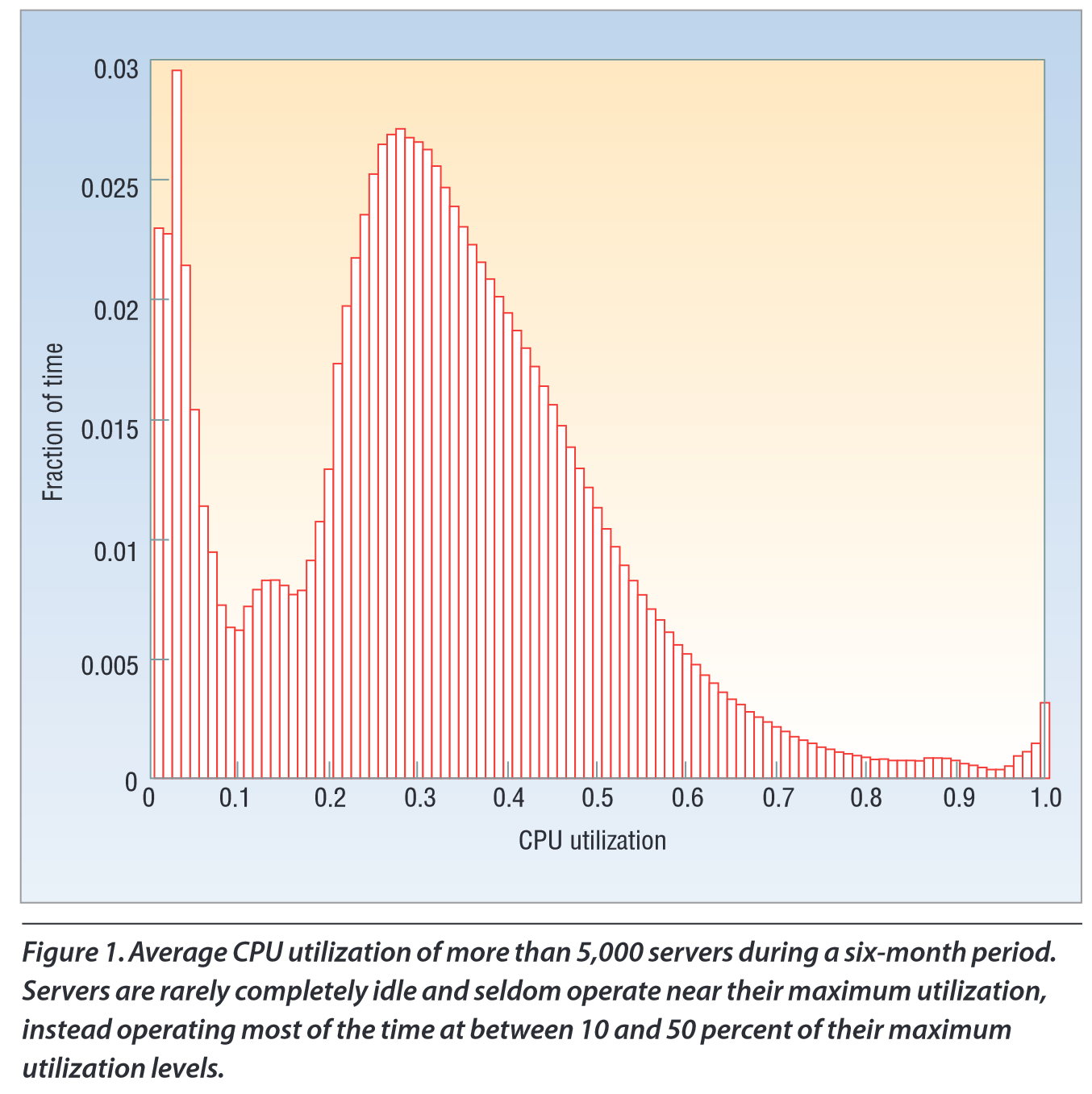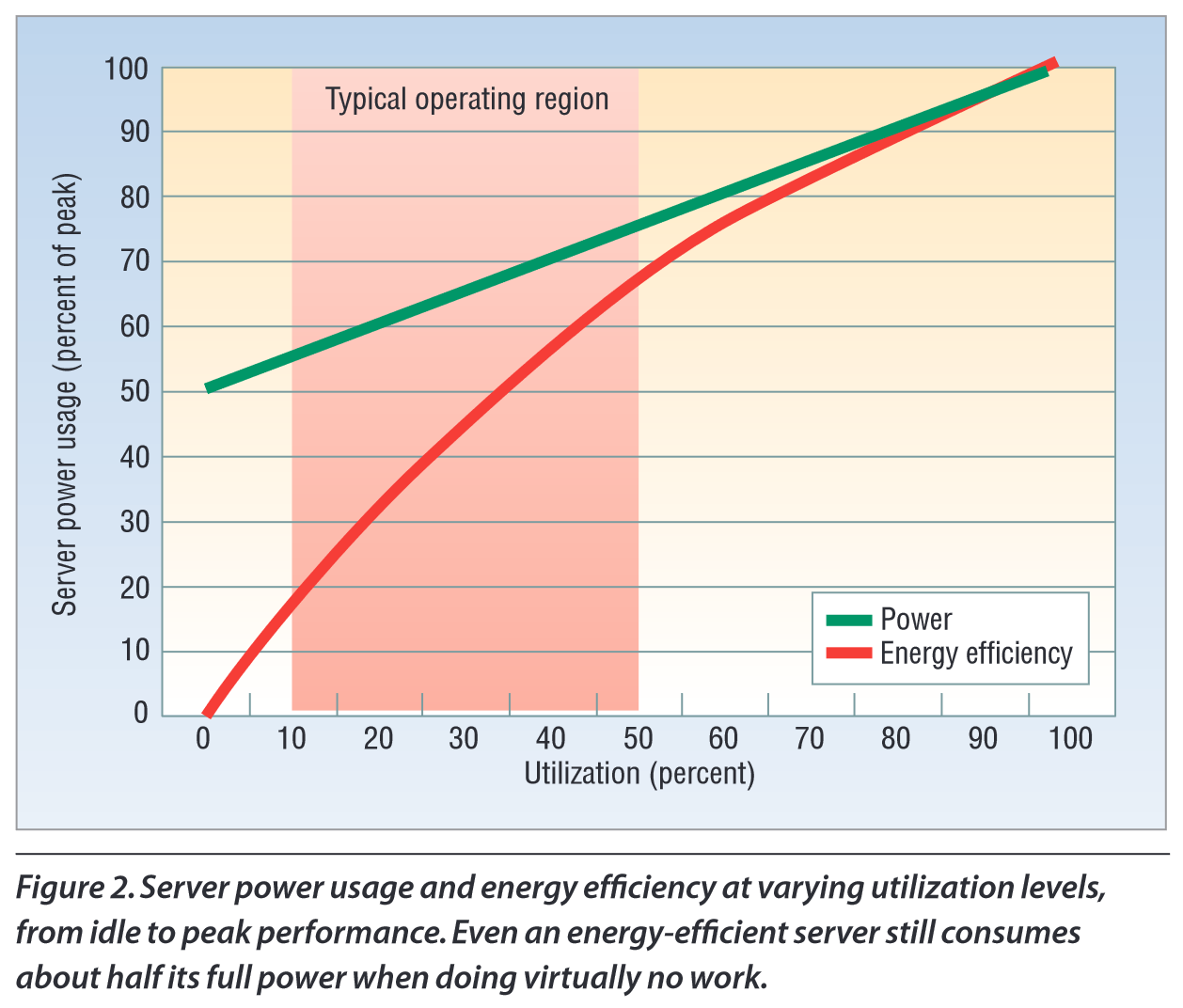The Case for Energy-Proportional Computing
Status:: 🟩
Links:: Power Proportionality and Idle Power Consumption of Servers
Zotero Tags:: #zotero/💎 #zotero/green_software
Metadata
Type:: #zotero/journalArticle
Authors:: Barroso, Luiz André; Hölzle, Urs
Title:: The Case for Energy-Proportional Computing
Publication Title:: "Computer"
Date:: 2007
URL:: https://ieeexplore.ieee.org/document/4404806
Bibliography
Barroso, L. A., & Hölzle, U. (2007). The Case for Energy-Proportional Computing. Computer, 40(12), 33–37. https://doi.org/10.1109/MC.2007.443
Zotero
Abstract
Energy-proportional designs would enable large energy savings in servers, potentially doubling their efficiency in real-life use. Achieving energy-proportionality will require significant improvements in the energy usage profile of every system component, particularly the memory and disk subsystems.
Notes & Annotations
🟨 Note (last modified: 2023-03-31#10:53:35)
Dynamic Range: Differenz zwischen Energieverbrauch im Idle-Modus und bei 100 % Auslastung in Prozent. Um so höher die “Dynamic Range”, um so besser. Beispiel: 10 W im Idle-Modus, 100 W bei 100 % Auslastung: DR = 90 %
📑 Annotations (imported on 2023-03-31#12:52:35)
rvers are rarely completely idle and seldom operate near their maximum utilization. Instead, servers operate most of the time at between 10 and 50 percent of their maximum utilization levels.
Spreading data across multiple machines improves data availability as well because it reduces the likelihood that a crash will cause data loss.
As a result, all servers must be available, even during low-load periods. In addition, networked servers frequently perform many small background tasks that make it impossible for them to enter a sleep state.

even an energyefficient server still consumes about half its full power when doing virtually no work. Servers designed with less attention to energy efficiency often idle at even higher power levels.

Notably , energy efficiency in the 20 to 30 percent utilization range—the point at which servers spend most of their time—has dropped to less than half the energy efficiency at peak performance.
Energy proportional machines would ideally consume no power when idle (easy with inactive power modes), nearly no power when very little work is performed (harder), and gradually more power as the activity level increases (also harder).
Humans, for example, have an average daily energy consumption approaching that of an old personal computer: about 120 . WHowever, humans at rest can consume as little as 70 W,8 while being able to sustain peaks of well over 1 kW for tens of minutes, with elite athletes reportedly approaching 2 kW.9
Current desktop and server processors can consume less than one-third of their peak power at very-low activity modes, creating a dynamic range of more than 70 percent of peak power. CPUs targeted at the mobile or embedded markets can do even better, with idle power often reaching one-tenth or less of peak power.10 They achieve this even when not using any performanceimpacting—or software-visible—energy-saving modes. In our experience, the dynamic power range of all other components is much narrower: less than 50 percent for DRAM, 25 percent for disk drives, and 15 percent for networking switches.
Energy-proportional computers would enable large additional energy savings, potentially doubling the efficiency of a typical serv